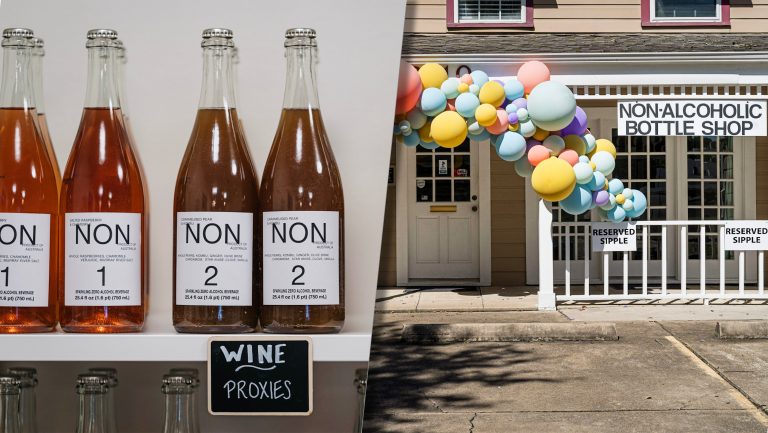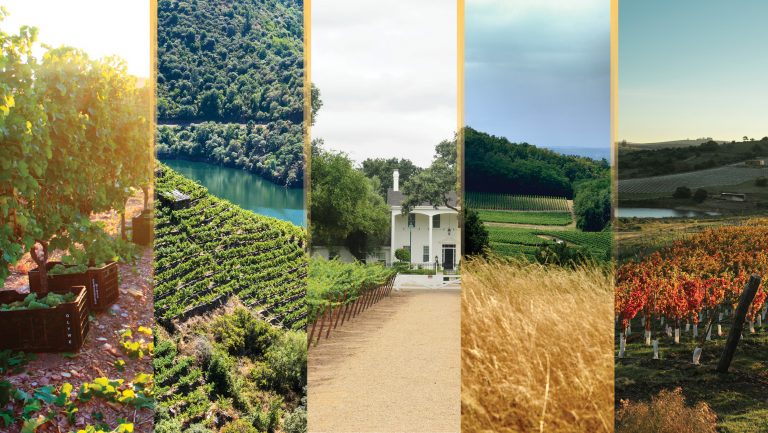The no- and low-alcohol category (NOLO, to borrow the term often used in the U.K.) is on fire. The media coverage is substantial, investor interest is strong, and the growth numbers are impressive.
According to NielsenIQ, for the 52-week period ending September 18, 2021, the total NOLO category grew to $3.1 billion in the off-premise channel, with a growth rate of 10.4 percent compared to just 2.2 percent for the alcohol category as a whole. The $331 million no-alcohol sub-category is growing even more rapidly—33.2 percent for the same period. Non-alcoholic beer, a market fixture for years, has seen new excitement with the rapid growth of the craft segment, and new spirits entrants have been making headlines since the category was first introduced nearly a decade ago.
But while it has often taken a backseat to these leading non-alcoholic categories, NOLO wine has begun evolving rapidly—and 2022 looks to be a breakthrough year. Major brands are releasing no- and low-alcohol labels, new brands are popping up daily, and wine-adjacent offerings are expanding the category’s boundaries.

Don’t miss the latest drinks industry news and insights. Sign up for our award-winning newsletters and get insider intel, resources, and trends delivered to your inbox every week.
What has changed in the NOLO wine category to make it an important stocking consideration, and what should buyers know as they’re adding these products to their inventories? SevenFifty Daily spoke to producers, distributors, and retailers across the country to get their take on the NOLO category and find out what’s in store for the future.
High-Quality Products Spur Retailers to Reconsider NOLO Wines
Customers are thirsty for NOLO wines, but those of us who sell them have warmed to the category more slowly. “Up until a year ago, we had three SKUs and they were over in the corner, tucked away, collecting dust,” says Mitch Ancona, the owner of Ancona’s Wines & Liquors in Fairfield County, Connecticut. Many shops likely have a similar selection, focused on mainstays such as Sutter Home’s Fre and J. Lohr’s Ariel. It was a blind tasting of the Leitz Eins Zwei Zero wines that made Ancona realize there were more options available.
Kevin Pike, the owner of Schatzi Wines, began importing the Letiz line-up in 2017 but didn’t really warm up to the category until 2020, when his wife Robin Touchet, also in the industry, convinced him to attempt a dry January. “Iced tea gets old real quickly—especially in January—so we tapped into the Leitz stuff and other things, like Seedlip, and we found them satisfying,” he says. “I was more convinced that there was a future here.”
He’s not alone in seeing the future. Powerhouse brands such as Yellow Tail, Kendall-Jackson, and Kim Crawford all launched lower-alcohol lines last year. Recent wineries entering the non-alcoholic wine space include Miller Family Wine Co. (with Hand on Heart), Veuve du Vernay, Barton & Guestier, and Stella Rosa, while New Zealand’s Giesen is expanding their successful alcohol-removed 0% line beyond Sauvignon Blanc, introducing a red, rosé, and Pinot Gris in the next several months. The rapid onslaught of traditional producers entering into the NOLO segment is unlikely to end soon.
The inclusivity aspect of selling these wines is important to Melissa Zeman, owner of BottlesUp! in Chicago. She has stocked NOLO wines since opening in 2019. “It was always something I wanted to offer as a way to include all humans in the shop, not just the drinkers,” she explains. “I’ve had everyone from people ‘drying out’ a bit, to folks on medication, to expecting mothers, to those who simply live sober but like having a drink in their hand. It’s nice to know we can offer something good for all of these groups.”
Peter Plaehn, the general manager of Stone Lake Bottle Shop’s two locations in the Minneapolis-Saint Paul area, agrees, stocking a broad NOLO selection “so our customers can choose how they want to celebrate and come see us for any occasion. It may not be a volume category (yet), but we have a responsibility as merchants of a controlled substance to offer quality NA and low-proof options.” Erin Cardwell, a buyer at Brooklyn’s Dandy Wine & Spirits concurs. “I feel as though there is a little bit of an eye roll mentality with the trend,” she says. “As I’m sure you know, the wine and spirits industry in general can often center around drinking as much as possible.”
Production Methods Matter
Alcohol-reduced and alcohol-removed wines start as full-strength wines, using one of several methods to remove the alcohol. While straight distillation requires the wine to be heated to 173 degrees Fahrenheit to boil off the alcohol, using a vacuum distillation process allows this to happen at cooler temperatures (77 to 88 degrees Fahrenheit). An alternative process, spinning cones, makes use of centrifugal force and nitrogen to separate out aromas and phenolics prior to removing the alcohol. Finally, reverse osmosis uses filtration technology to separate the wine into its parts based on molecular size.
The challenge in all of these methods is to maintain flavor and texture. While these techniques have regularly been used to make minor alcohol adjustments, in the case of NOLO wines, a much larger percentage of the original liquid is removed. This is especially true for fuller-bodied, higher-octane reds, where alcohol can make up 14 to 15 percent (or more) of a wine’s volume, contributing texture and richness.
Producers can compensate for what’s missing by adding a little sugar, grape juice, or other juices and botanicals to try to mirror the flavor of the alcoholic counterpart. Bubbles are also a way to add vibrancy and perk up the wine’s texture.
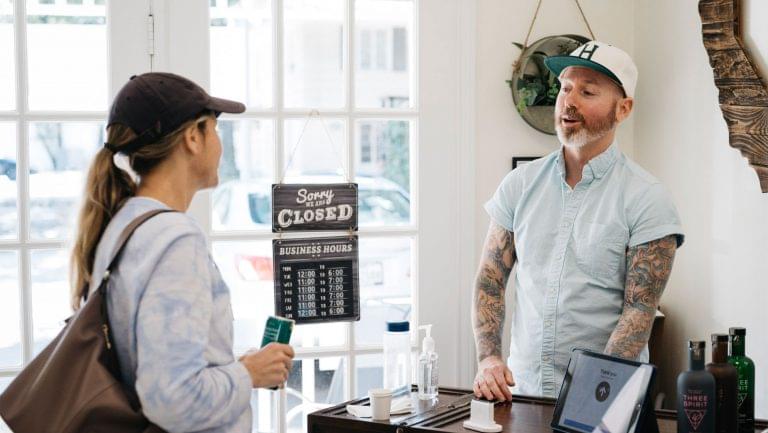
The holy grail though, is a rich red that can match some of the oomph of the full-strength bottling. “The number one request is, ‘I’m looking for a full-bodied red wine.’ Yeah, you and about a million other people,” explains Danny Frounfelkner, the founder of Sipple, a non-alcoholic bottle shop in Houston. “It’s getting better, we’re getting closer.”
But research continues. We may soon see breakthrough developments along the lines of what we’ve seen in the beer industry, where companies like Athletic Brewing Co. have developed full-fermentation processes that maintain flavor at a non-alcoholic labeling level (less than 0.5% ABV).
To make the situation extra confusing, those labeling rules, which fall under the jurisdiction of the FDA, do not consider the terms “non-alcoholic” and “alcohol-free” to be the same. Alcohol-free wines must contain no detectable alcohol, so the term may be used on brands that undergo no alcoholic fermentation (such as Opia) as well as alcohol-removed wines. There is also the vibrant but nebulous wine-adjacent category which includes brands such as Jukes Cordialities, Proxies by Acid League, and TÖST, which blend juices, teas, vinegar, and botanicals to create the impression and sensation of wine. “Standard” alcoholic wines start to look almost straightforward by comparison.
As buyers, we should be asking about all of this and driving for transparency as the category grows: Is the wine dealcoholized? Using what method? What, if anything, is being added to round out the flavor? And especially, what is the source of the original grapes?
“I’m looking for great-tasting wines, but we’re also looking for actual wines,” says Frounfelkner. “I want to know. Our customers what to know—where’s it from? What’s the grape?”
Managing Taste Expectations is a Key Selling Factor
You don’t want a customer’s first experience with a NOLO wine to be their last. “The previous world of non-alcoholic wine has scarred so many people’s idea of what is available out there,” explains Apryl Electra Storms (who uses they/them pronouns), the cofounder of Brooklyln’s non-alcoholic shop Minus Moonshine.
One bad experience can turn consumers off of the entire category, driving them to beer or spirits. That’s a loss for people who love wine—especially at a time when the level of quality and taste is increasing rapidly. “Once they try some of the new brands, they come back for more,” says Storms.
It’s especially important to manage expectations for certain categories of non-alcoholic wines. “I think there is a long way to go to get someone to choose no-alcohol Napa Cabernet over a regular Napa Cabernet,” says Andrea Bergner, the purchasing manager at Vino di Vino in the Boston area. “Until the structure, tannin, aromas, and taste can be matched, true wine lovers will steer clear of the non-alcoholic wines.”
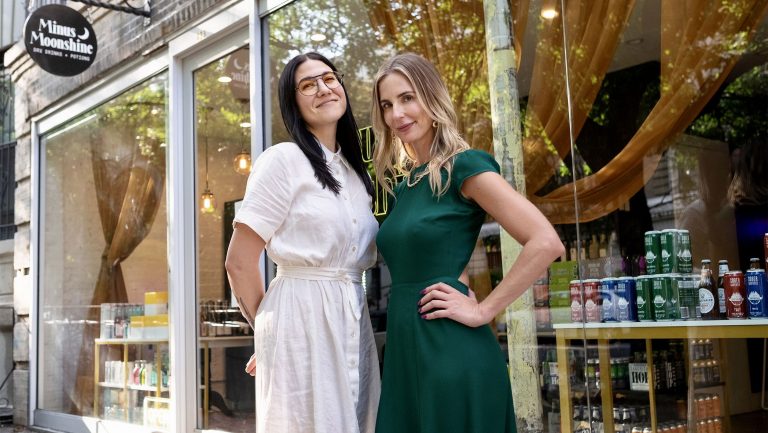
This is why shops, especially those focused solely on the non-alcoholic category, are carefully thinking about education. “You’re somebody’s first experience with the category, so it’s extra important that the wine tells the story that you want it to tell,” explains Sipple’s Frounfelkner. “I tell them you need to have an open mind right now. The structure’s different, the fruit’s more subtle, so we give people a quick deep dive in education so when they try their first non-alcoholic red, they’re not expecting it to be exactly like what they used to drink.”
Weekly tastings help customers discover what’s available and allow Frounfelkner to guide the conversation. “We can say, let’s break it down and get to the bottom of what you like.”
These conversations become increasingly important as shops expand their selections. “It used to be ‘here’s your still, here’s your sparkling,’” says Sarah Pierre, the owner of Atlanta’s 3 Parks Wine Shop, “but as we’ve added more offerings, we need to be ready to describe the differences. It’s no longer just take the one option that’s available.”
It’s worth noting that NOLO wines can seem surprisingly expensive to consumers who may feel they shouldn’t have to pay the same—or more—for a wine with less alcohol. “We make a regular wine and remove the alcohol,” explains Heidi Scheid, whose family winery launched the Sunny with a Chance of Flowers low-alcohol wine line-up in 2020. “It’s much more labor-intensive and much more capital-intensive.” Expensive equipment and multi-step processes all add additional costs to the final product bottling. And quality wine grapes are expensive—even if they are destined for dealcoholization.
Selling the Low-Alcohol Category
An October 2021 NielsenIQ Homescan survey (as presented during the October 2021 Distilled Spirits Council conference) found that 78 percent of non-alcoholic drinks buyers in the U.S. are also purchasing alcoholic beer, wine, or spirits, an indication that many customers aren’t looking to completely cut alcohol out of their lives, but are paying closer attention to how much they are drinking and managing it more mindfully.
Dandy’s Cardwell has noticed that people requesting low-alcohol wines “tend to be mostly the ‘health-conscious’ group of people, as in they believe that low-alcohol wine is healthier.” Because “better for you” marketing around clean wine and hard seltzers can make it difficult for drinkers to understand what’s really going on in their glass, take each request for NOLO wine as an opportunity to explore and understand what they’re really hoping to achieve.
At my shop, Copake Wine Works in New York’s Hudson Valley, we’ll explain to consumers that reducing their alcohol consumption may involve exploring wine styles that are naturally lower in alcohol, or that are more likely to taste delicious even if dealcoholized. It may be as simple as understanding the impact of a five-ounce pour compared to a six-ounce pour. And it could be a quick reminder that a can of hard seltzer likely has the same amount of alcohol—and calories—as a five-ounce pour of dry, medium-bodied wine.
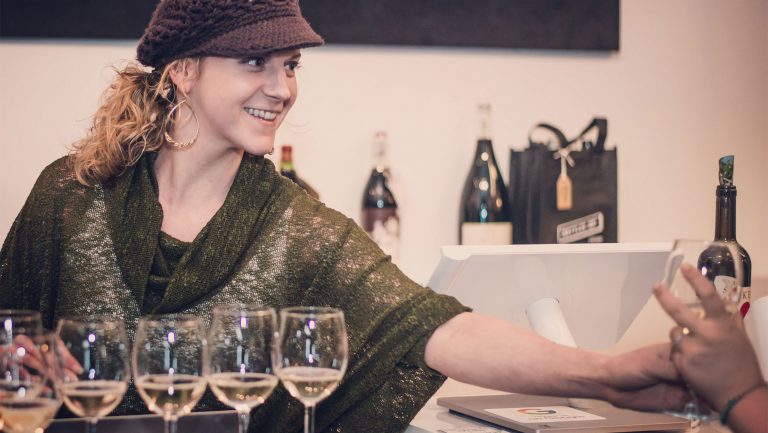
Given the limited information on wine labels, these conversations can quickly turn into mini-chemistry lessons about the relationship between sugar, alcohol, and calories. For customers that really want to go down the rabbit hole, have an online calculator at the ready, such as the one provided by Wine Steps.
While there’s increasing interest in purposefully made low-alcohol wines, there are plenty of existing wine styles that can fit the bill. “We don’t ever market this as a category per se,” explains Harmon Skurnik, the president of Skurnik Wines & Spirits, “but we do have a lot more wines in our book that are under 13% ABV—even some that are 10% or 11%, and of course there have always been the German Spätleses that come in at 8%.”
Once-obscure styles such as dry Muscat, Silvaner, and pét-nat are joining naturally low-alcohol mainstays like Vinho Verde and Moscato d’Asti. Sariya Jarasviroj Brown, the founder of Arizona-based importer Circo Vino, highlights Furmint and St. Laurent as grape varieties that can easily make lower alcohol wines.
Wine-adjacent options also offer opportunities. “I always try to steer people in the direction of what I think could be a fun alternative,” says Dandy’s Cardwell. She mentions piquettes and ciders as well as some of the playful verjus-type wines, such as Jus Jus from Martha Stouman and Julia Sherman. Fruit/grape co-ferments, while potentially confounding state liquor control boards, also offer low-alcohol sips for the adventurous.
What’s Next?
Consumer interest in the NOLO category isn’t likely to dry up soon, so retailers should look forward to seeing—and selling—an increasing number of options. “What will make a world of difference is when a few more producers who make actual wine carve out a little time to dabble in this category,” says BottlesUp!’s Zeman. “Obviously a gamble for producers, but isn’t that how all profitable endeavors start out?”
“I’m personally excited for brands to go into the unfiltered, natural-wines direction. Maybe some orange wines?” says Minus Moonshine’s Storms. “I hope that people rethink their expectations when trying or revisiting non-alcoholic wines. It’s a whole new world out here and this is just the beginning.”

Dispatch
Sign up for our award-winning newsletter
Don’t miss the latest drinks industry news and insights—delivered to your inbox every week.
Christy Frank is a partner at Copake Wine Works, a shop in the Hudson Valley of New York. She is an advanced sommelier with the Court of Master Sommeliers and holds the WSET Diploma in Wines.

